
- Homeowners
- Professionals
- Products
- Back
- PlasterBoards
- Metal Framing & Accessories
- Jointing and Finishing
- Gypsum Plasters
- Ceiling Tiles
By material Type
By Category
- Resources
- About
- Careers
- FAQ's
In 2022, we are at the cusp of an enthralling period in construction, where building spaces are witnessing innovation in every aspect. Not only from a design sense, but from a practical standpoint as well, as conversations arise concerning quality of build materials, sustainability, structural integrity and so on.
Integrating aspects of comfort from the ground up is another trend that is gaining momentum with customers. After all, the acoustics, air quality, natural lighting, and ergonomics of a room are just as essential as an appealing design.
Factoring these elements in is key to building a space that truly feels like home, especially when it comes to acoustics. Whether it’s a house, an office, or even a cinema, acoustical performance and soundproofing are vital factors to consider. While this may be a broad, and quite technical topic, here are a few fundamental terms that can help you better understand and navigate the world of acoustics-
The difference between ‘sound’ and ‘noise’
While they are often used interchangeably, there is one simple difference between the word ‘sound’ and ‘noise’. When you hear something welcome, that your mind is prepared for, it is a sound whereas noise is the unwelcome and disturbing sound around us. With this distinction in mind, let’s look at a few terms related to sound and noise.
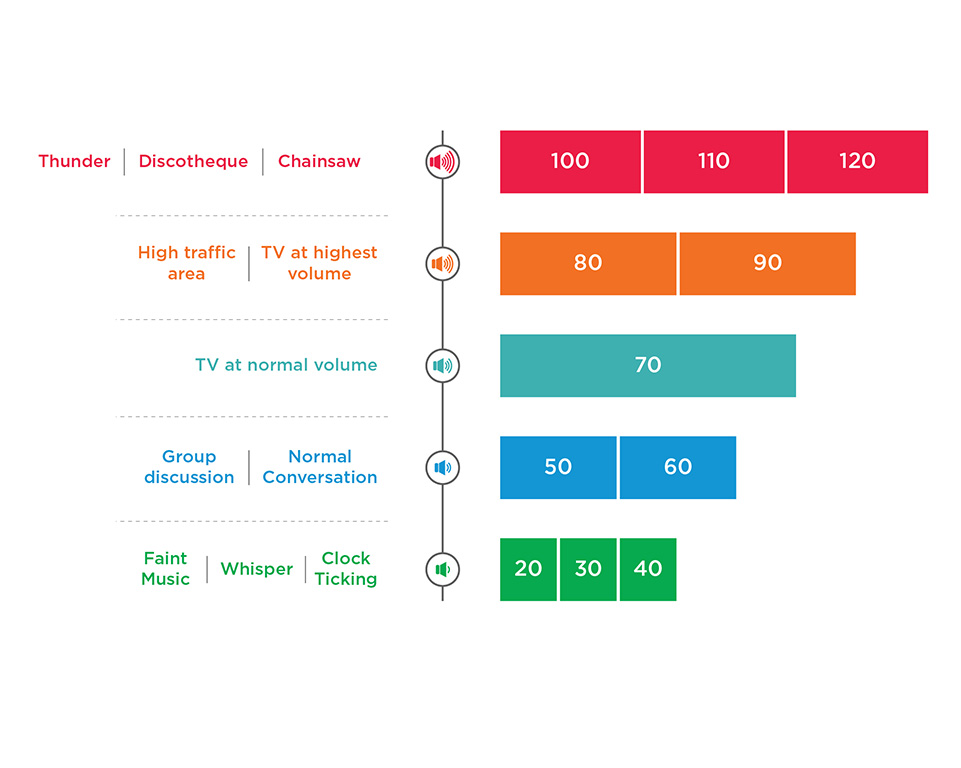
The pressure level of a sound, as measured in decibels, conveying how loud or soft a sound is
The volume of a sound can be subjective, depending on how each individual perceives it, which is why we need an objective measure of how loud or soft a sound is. This measure is called sound pressure level, it is measured in decibels.
For instance, if you are in an open field, with birds chirping all around you and a soothing wind blowing, the SPL of that area would be about 35 to 40 dB. On the contrary, a normal conversation indoors would be around the range of 50 dB.
The sound present in the background of a given environment, excluding any sound generated by the primary observer
Ambient noise, or background noise, is a basic concept that every individual is familiar with. Like SPL, it can be measured in decibels. For example, let’s say you are out getting lunch at a restaurant, all of the sound around you, from scattered conversations, clinking cutlery and background music, forms the ambient noise of that space. Every space will have some background noise when it is operational.
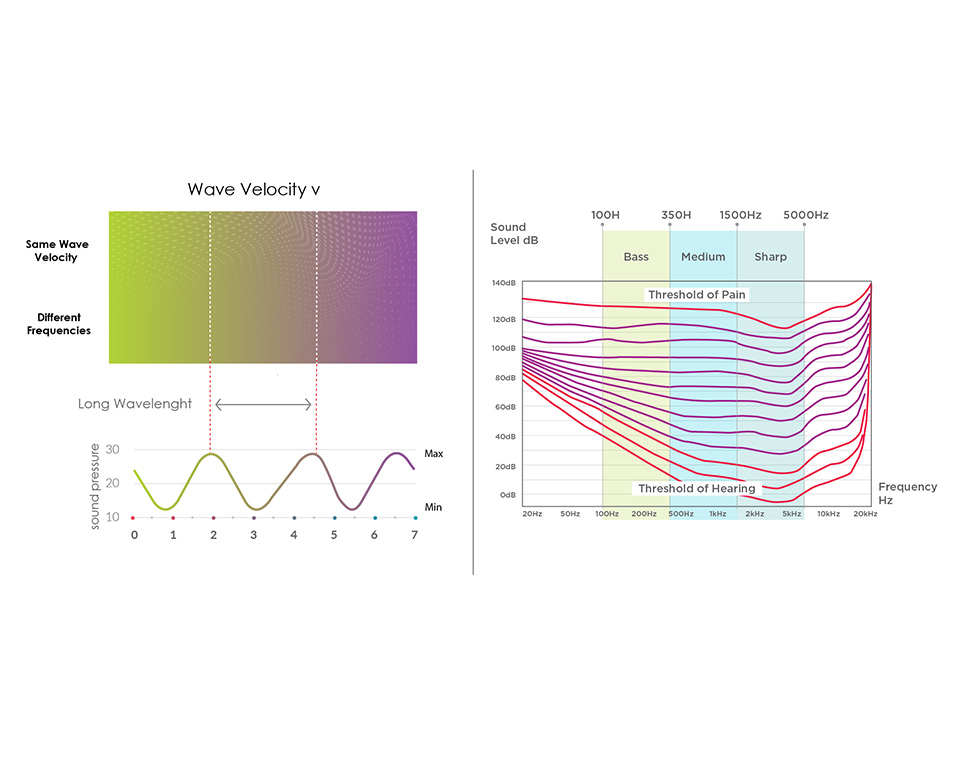
The number of vibrations a sound wave undergoes in a second is called frequency, it is measured in hertz (Hz)
When you get down to the physics of it, each sound that we hear or make is made up of vibrations. These vibrations decide the frequency of a sound. Each sound has a different frequency which is measured in hertz (Hz). Human ears can only detect sounds within the range of 20 to 20,000 Hz.
As a rule, high-frequency sounds are high-pitched, such as a shrill scream or a whistle, whereas low-frequency sounds are low pitched, such as the sound of thunder.
Frequency should not be confused with sound pressure level, SPL measures the volume of a sound in decibels whereas frequency is a measure of the number of vibrations per second, denoted in hertz.
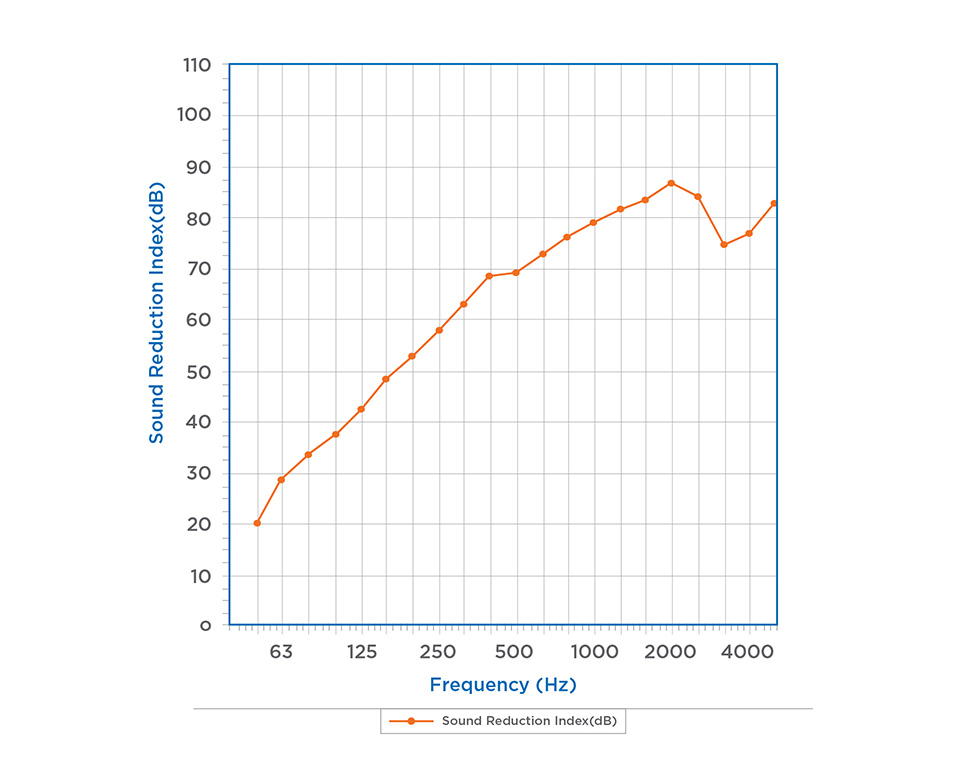
A band of frequencies spanning one octave, where the upper limit of the band is twice the frequency of the lower limit
In the building material industry, and in most indoor spaces, the sounds that we hear, no matter of what volume, broadly fall under the frequency spectrum of 63Hz–8000Hz. As per the definition of octave band frequencies, below are the 8 frequencies according to which building material properties are measured and communicated.
63Hz, 125 Hz, 250 Hz, 500 Hz, 1000 Hz, 2000 Hz, 4000 Hz, 8000 Hz
As there are 8 frequencies in the table above, it is known as Octave Band.
Every frequency is twice the previous frequency. For example, 125 Hz is twice that of 63Hz, following which, 250 Hz is twice that of 125 Hz. These bands are used to segment and analyze sound data by frequency levels.
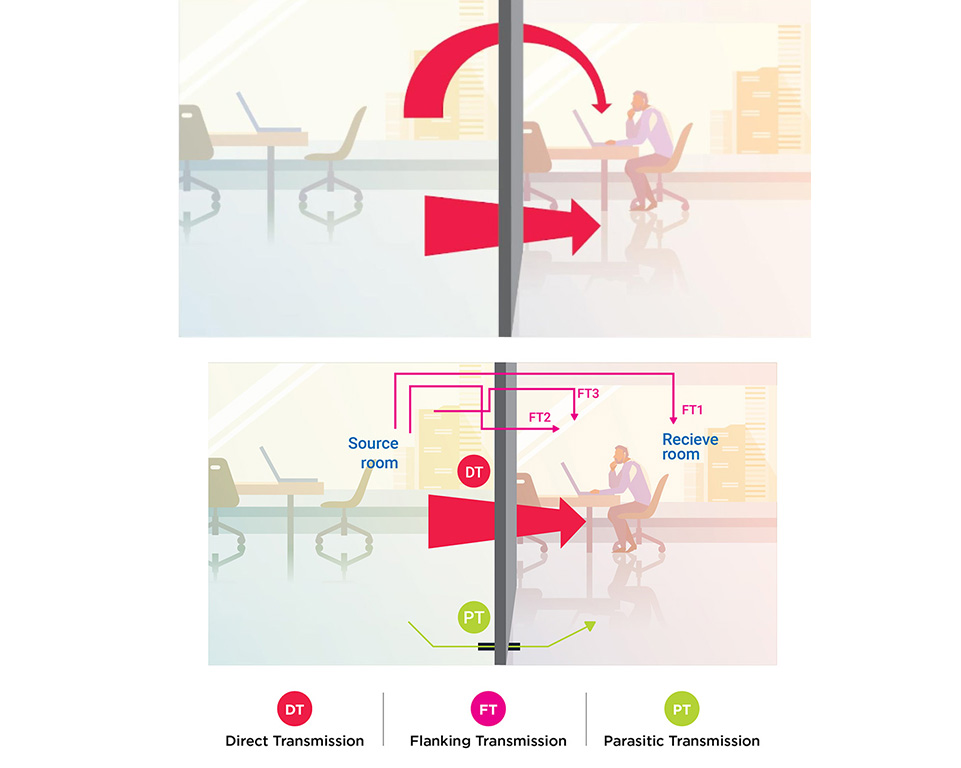
Sound insulation is a measure of how effectively a surface can obstruct sound waves from passing through it
In simple terms, it measures the sound-proofing ability of a room. As sound waves travel through the air, they hit many surfaces which either reflect or absorb the sound. Hard surfaces that reflect sound tend to create a noisy atmosphere, which is why we use surfaces that absorb sound for soundproofing in building construction. The sound insulation index is measured numerically, the higher the value, the more effective the insulation is.
It can be measured under two settings, under ideal conditions in a laboratory, or on-field, in a practical setting.
In laboratory
Note- The weighted sound reduction index is used to ascertain the insulation of building material that has been measured in a laboratory setting.
In Situ (on-field)
Note- Weighted sound level difference is used to ascertain the insulation between rooms in a building as they are; for the sake of accuracy, these values cannot be compared with measurements made under other conditions.
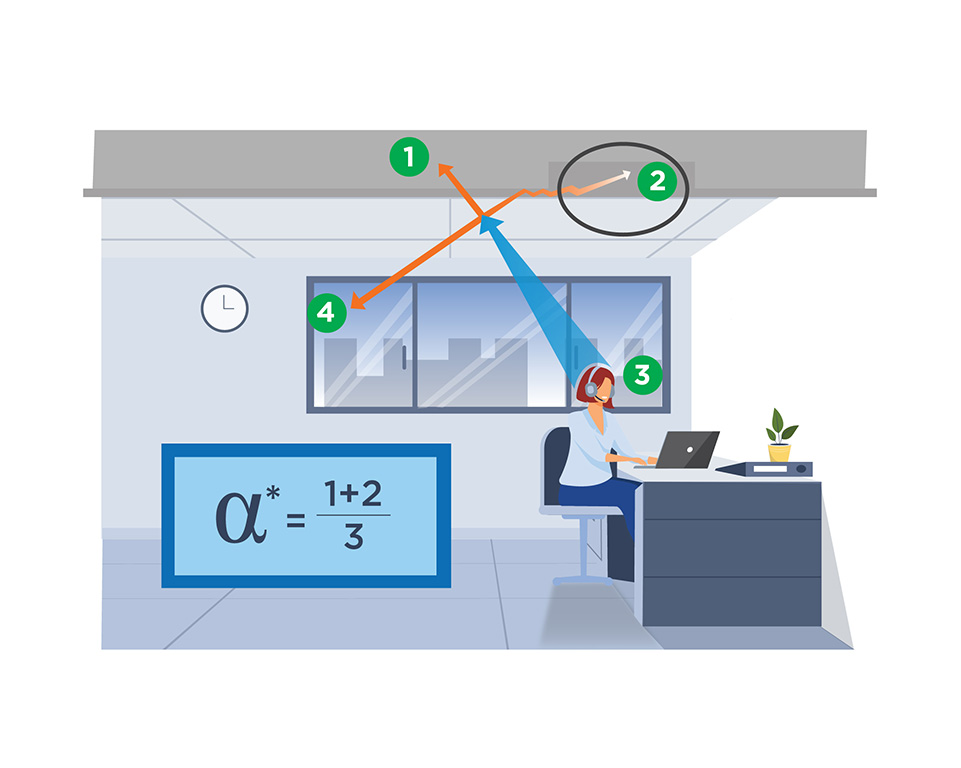
When a sound wave strikes one of the surfaces of a room, some of the sound energy is reflected back into the room while the rest penetrates through the surface. The tendency of a material to absorb a sound instead of reflecting it back is called absorption. It is measured and indicated through different values, such as-
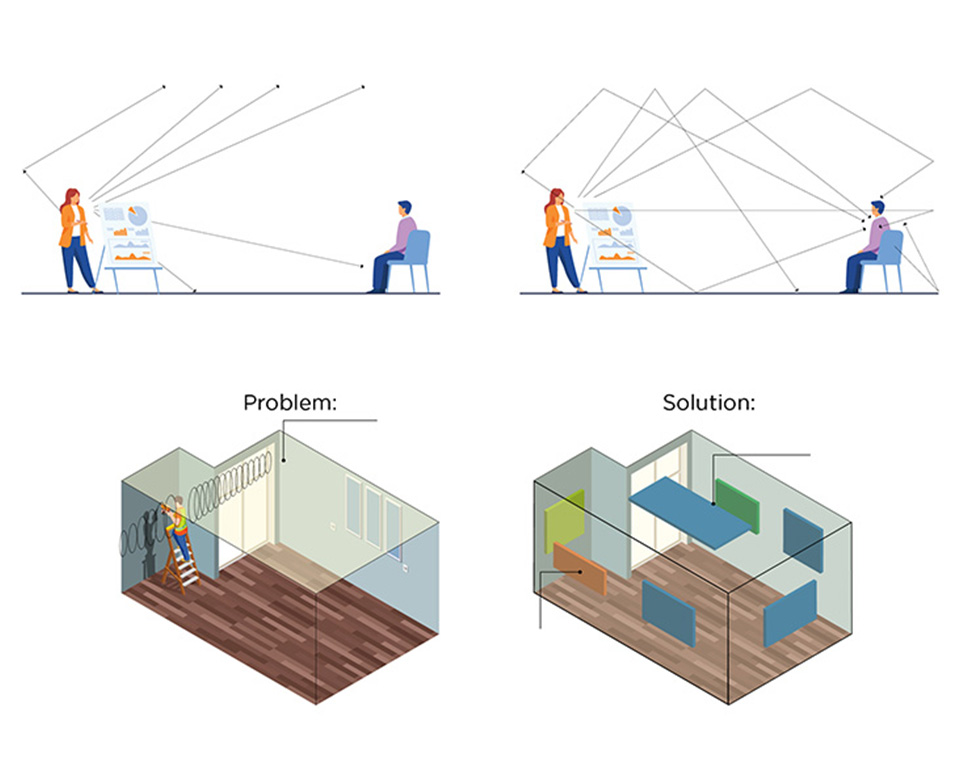
Time that would be required for the sound pressure level to decrease by 60 dB after the source of the sound has stopped.
Reverberation time is usually measured in octave or third-octave bands. This decay does not have to be measured over the full 60 dB range. The values ranging from 5 dB to 35 dB below the initial level are denoted by T30 and 5 dB to 25 dB below the initial level are denoted by T20.
With the knowledge of these terms and definitions, you have the groundwork in place for a thorough understanding of acoustics. Not only will this help towards better decision making, it will also make communication easier in terms of design and material selection.
More Articles